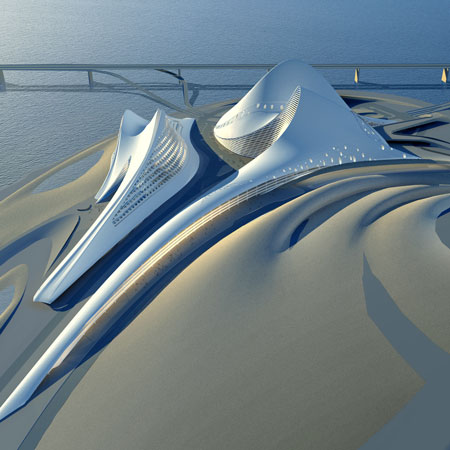
Dubai Opera House by Zaha Hadid
Zaha Hadid Architects have developed designs for a new opera house and cultural centre for Dubai.
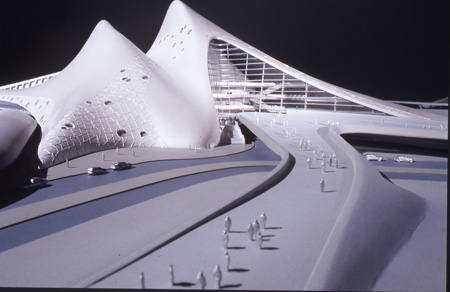
The dune-shaped building is proposed for an island off Dubai Creek.
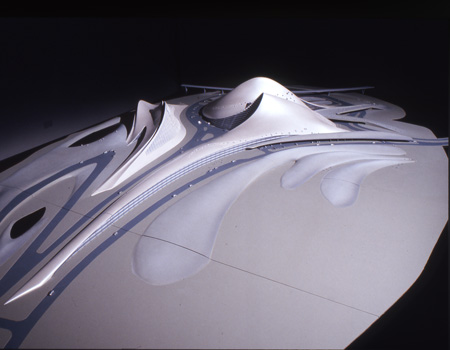
More info from Zaha Hadid Architects follows:
-
DUBAI OPERA HOUSE AND CULTURAL CENTRE [DUBAI, UAE]
2006-TBC
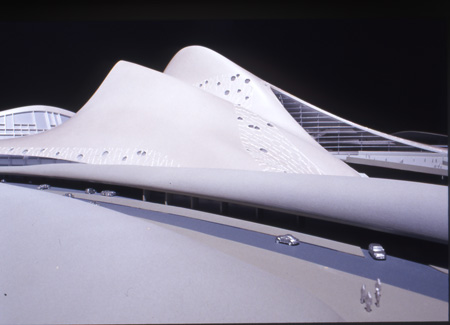
PROGRAM: Design for a Cultural Centre and Opera House in Dubai
ARCHITECT: Design Zaha Hadid with Patrik Schumacher
Project Director: Graham Modlen
Project Leader: Dillon Lin
Design Team: Christine Chow, Lourdes Sanchez, Yiching Liu, Swati Sharma,
Tyen Masten, Simone Fuchs, Johannes Schafelner
Competition Team: Christine Chow, Lourdes Sanchez, Yiching Liu, Larissa Henke, Claudia Wulf, Hooman Talebi, Daniel Dendra, Simon Yu, Komal Talreja
Engineering Consultant: Arup [London, UK]
Acoustics Consultant: Richard Cowell, Ian Knowles
Structural Engineering: Keith Jones
Building Services Engin.: Tim Thornton
Façade Engineering: Steve Bosi
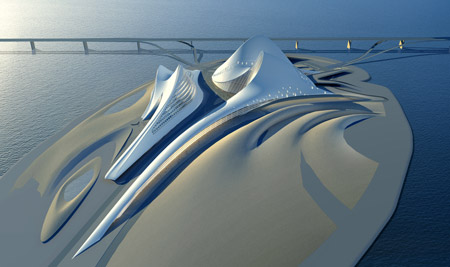
Introduction
The design calls for an exciting new cultural centre in the new Seven Pearls district of Dubai. This landmark development will accommodate an opera house, playhouse, arts gallery, performing arts school and themed hotel on an island in Dubai Creek just off the mainland part of the district. All of these facilities will be state of the art to host world class performances and exhibitions. The opera house will have a seating capacity of 2,500 while the playhouse will have a seating capacity of 800.
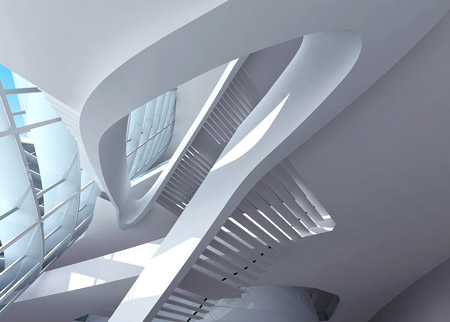
The arts gallery with 5000m2 of exhibition space is indeed a full size exhibition facility comparable to the Guggenheim Museum in New York. The hotel will accommodate guests in a 6 star setting. Sited on an island in Dubai Creek, the development will be connected to Greater Dubai by a road connection to the mainland.
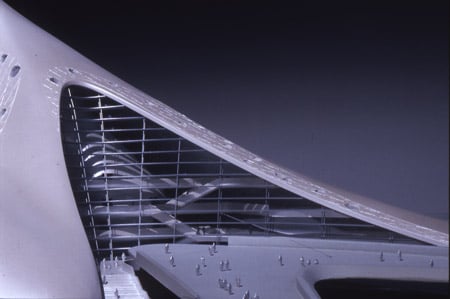
Design Concept and Programme Organisation
The proposal houses all of the facilities within a single striking structure. The gentle winding form evokes images of mountains or sand dunes. Rising out of the ground, this form is both a part of the landscape yet very much a distinct element in the skyline. The surrounding landscape forms build up to the main building. These constitute open park spaces as well as ancillary functions such as the parking facilities and the monorail station, which are either tucked under or integrated into the andscape forms.
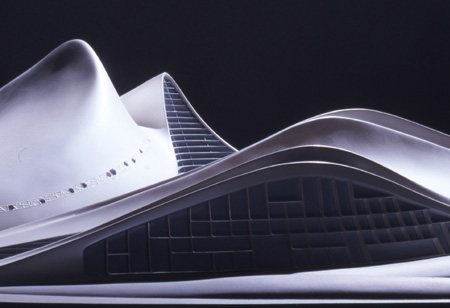
The two peaks correspond to the opera house and the playhouse. The tall requirements of the fly towers are nested under these peaks. From these peaks, the form gradually swoops down to touch the earth. The form is scalloped away where the three major entrances are to be found. The main entrances for audiences visiting either of the two performing arts auditoria are on the north side of the building. At the ground level will be the VIP entrance with car drop off right at the entrance and a separate foyer from the main foyer. This foyer serves both the opera house and the playhouse. The main foyer is a gentle multi-tiered landscape at one floor above the ground floor. It also serves the opera house and the playhouse as well as having an interior connection to the arts gallery.
Floating above this foyer are further foyer spaces serving the balcony levels. The foyer levels from the main foyer level up are visually connected to each other through a series of voids. This allows for direct views between the main foyer at the first floor all the way up to the highest balcony foyer. Surprising views are abundant in this space.
The auditoria are contained in flowing shapes that seem to emerge from the underside of the main shell. This inner shell however, does not quite touch the main shell. Instead, the two surfaces disappear into a light gap between them. Supporting functions found off the foyer are defined by walls that merge into the underside of the main shell.